
Note the obi fabric pillow on the small red banquette in Cecil Beaton’s London townhouse living room, photographed for Architectural Digest circa 1969.
Fashion designer Trina Turk uses an obi as a table runner in the dining room of her Los Angeles home (Elle Decor Aug. 2007).
While women’s obi have long been collected and made into throw pillows, table runners and the like, men’s obi, called kaku-obi, are not seen in interior design. I have long thought that their narrow shape, stiff feel, and simple graphic patterns would make them useful for some other purpose. But what? Today, at the Oedo Antique Fair, they caught my eye at a number of booths. 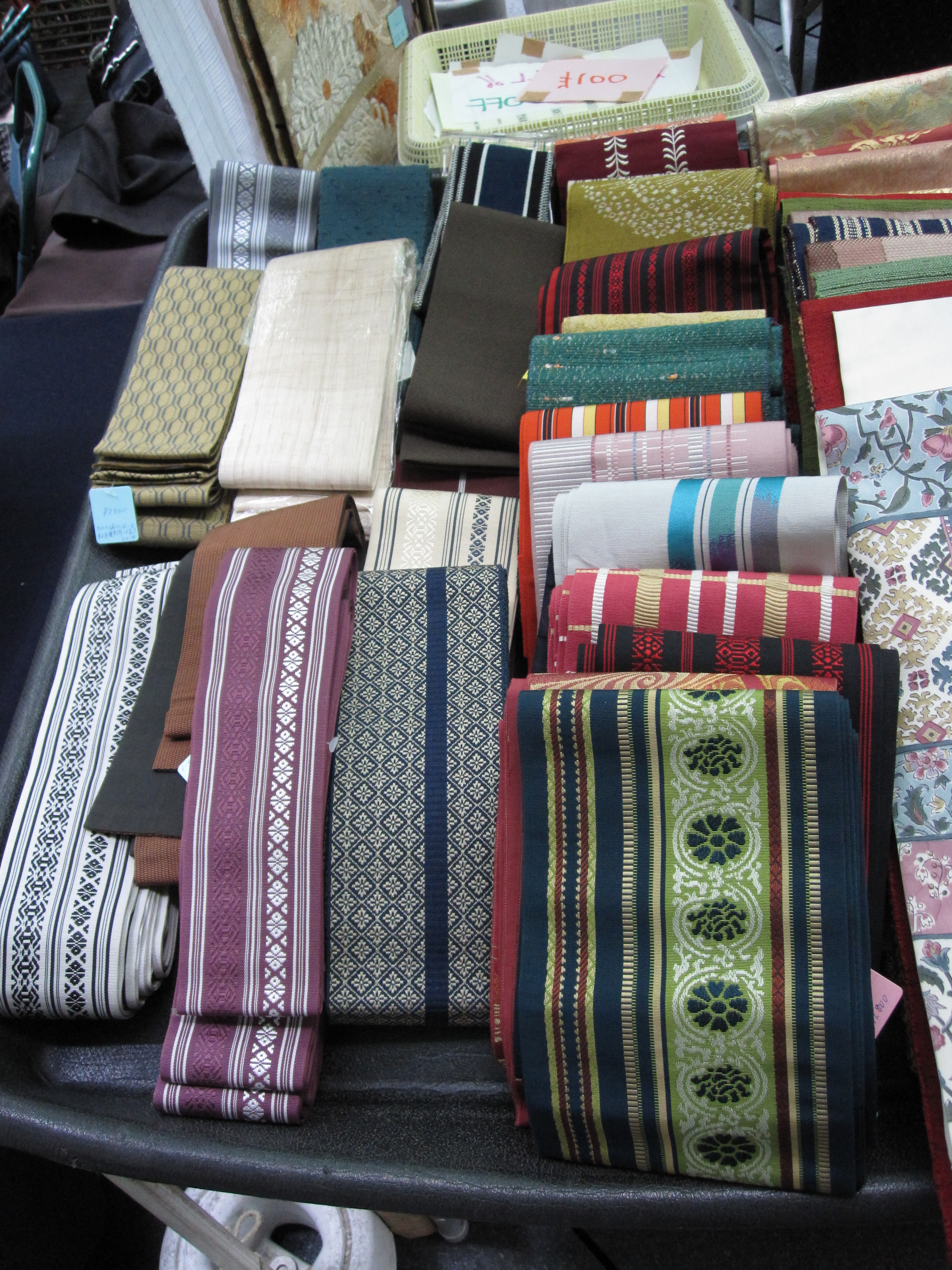
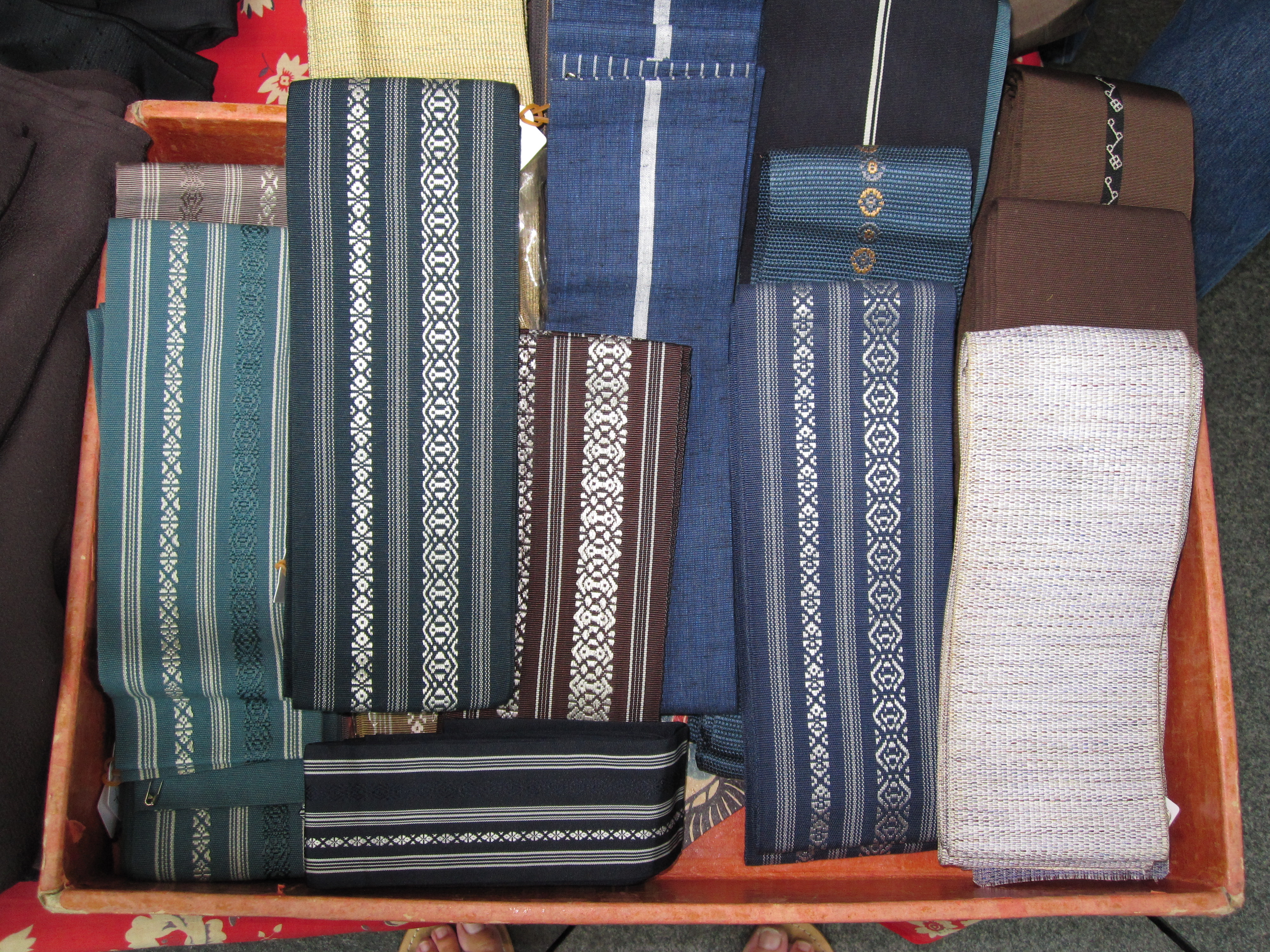
How they are tied was a mystery to me, and frankly, the dealer selling them did not know either. In classic Japan style, another customer overheared our discussion, and offered to teach me how. The dealer’s partner served as the model and I got a great lesson on how to tie kaku-obi.
My somewhat credible (according to them) second attempt.
Thanks ladies! They also had great kimono and indigo dyed fabrics.
A charming detail found on some of the best curtains is a contrasting leading edge or decorative tape. Two wildly different style rooms below illustrate this design. Both make use of a greek key tape on the curtain edge and, in the case of the Miles Redd dining room, on the bottom edge as well.
Grant K. Gibson’s San Francisco bedroom via The New York Times.
Miles Redd designed dining room featured in Elle Decor Jan./Feb. 2009.
Don’t you think one of the simple two tone kaku-obi would be perfect to edge a curtain? Trim a bedskirt or a chair? Finish off a valence?
Image credits: 1. Architectural Digest, 2. Roger Davies for Elle Decor, 3-6. me, 7. Peter DaSilva for The New York Times, 8. Simon Upton for Elle Decor

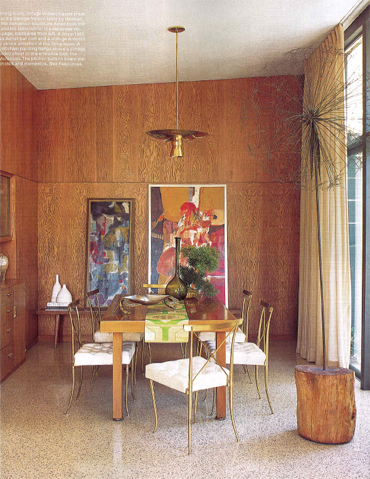
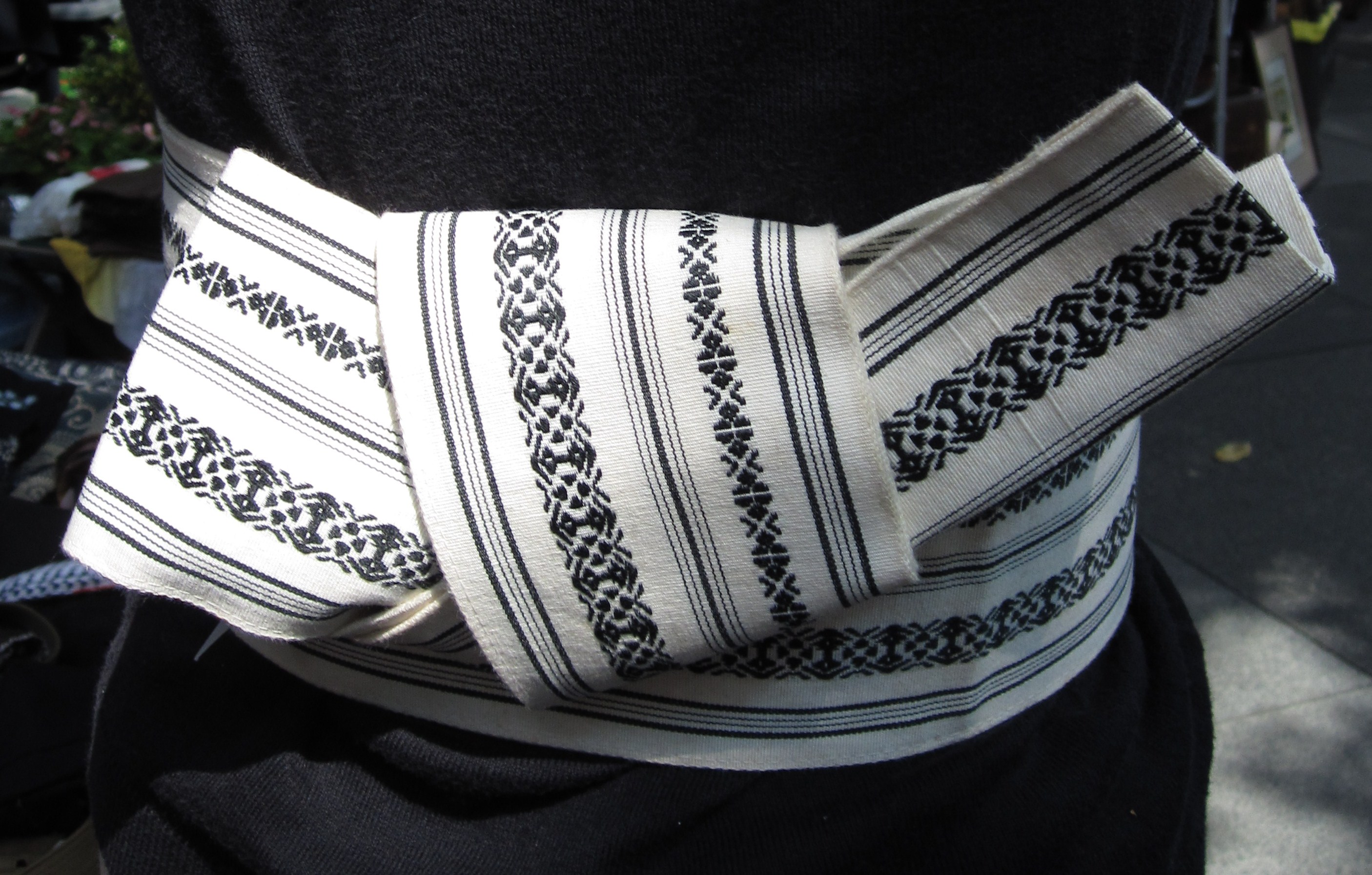
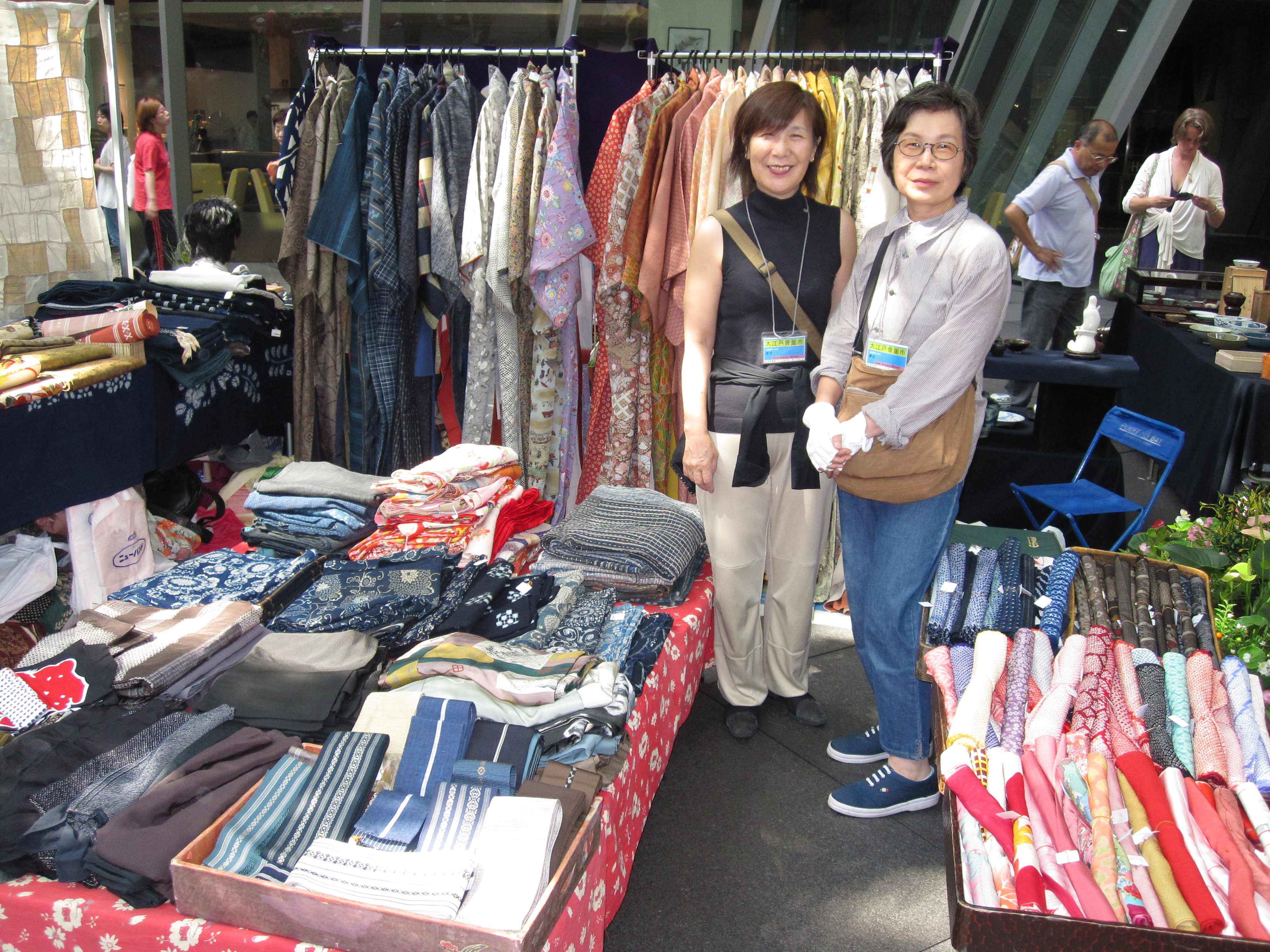
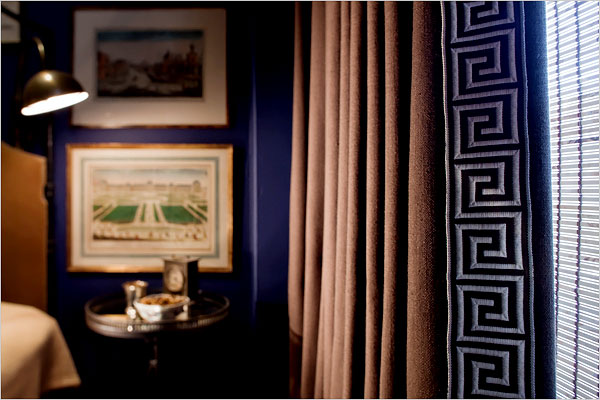
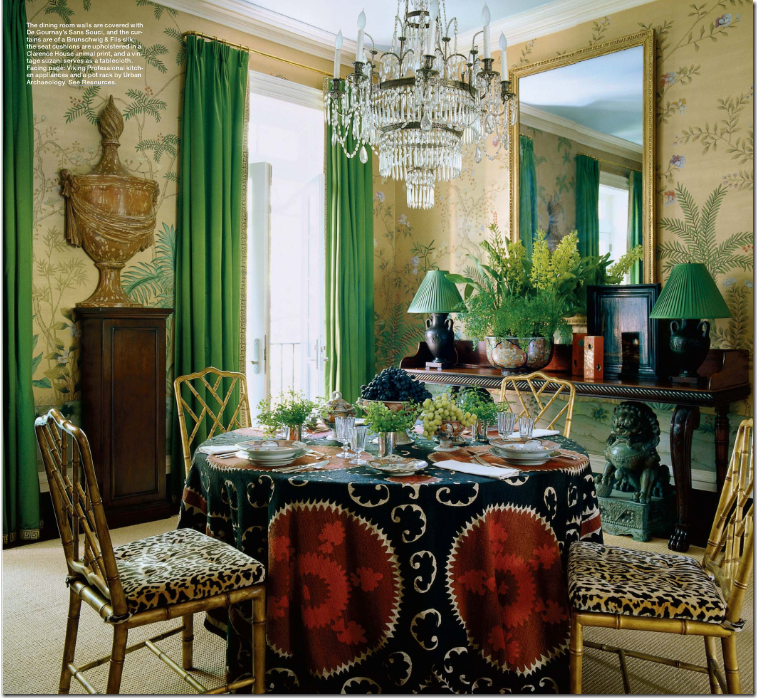
Hi Jacqueline,
I really enjoyed this latest post. I recently bought an interior design book about decorating with obi, so your discussion was very interesting to me. I have hung a nagoya (I think that’s the style) obi as a valance. The photographs you took are lovely, too – the colors of the obi look terrific. I like the very specific nature of each post – your blog is going to be a great read, and a wonderful resource for the curious. Thanks for sending me the link, I’m looking forward to reading more.
Thanks for your kind words Pam. I’d love to know the name of the book too!
I love this idea! Your photos are beautiful and your research is amazing (AD 1969!). Kaku-obi curtain edges would be exquisite.